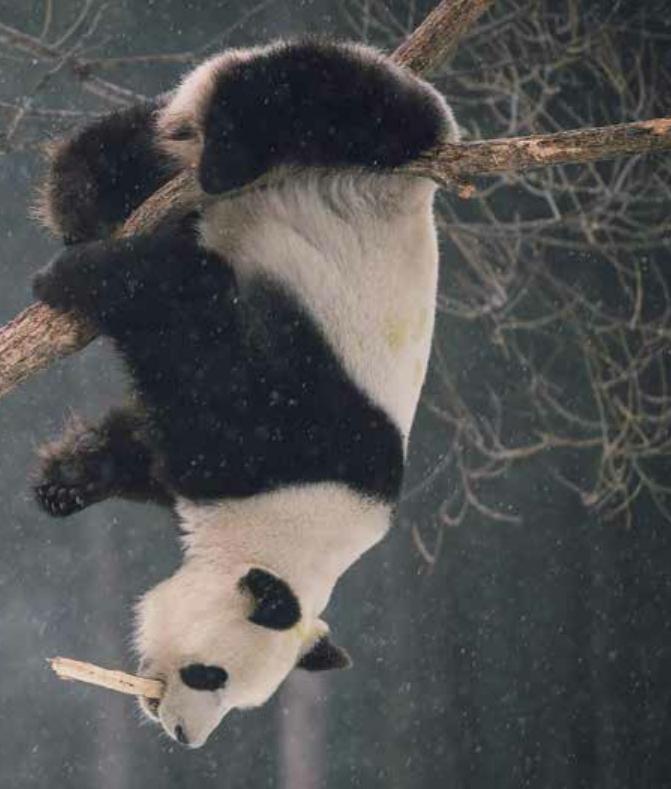Call of the Wild
By Zheng Yang
Chinas outdated Law on the Protection of Wildlife is getting a much needed upgrade almost 30 years after it was first enacted in 1988.
After three years of preparation, a revised law was finally unveiled on July 2 by the Standing Committee of the National Peoples Congress (NPC) of China, Chinas top legislature. But the law, which will take effect on January 1, 2017, has garnered much attention in China and abroad.
Tougher penalties
The 2016 Law on the Protection of Wildlife will expand the number of articles in the current law from 42 to 58. A stronger emphasis on wildlife habitat protection is one of the highlights of the revised law, according to Chang Jiwen, Deputy Director General of the Research Institute of Resources and Environment Policies under the Development Research Center of the State Council.
In the new law, the second chapter was renamed from “Wildlife Protection” to “Wildlife and Habitats Protection.” According to Chang, one of the main culprits behind the decrease in wildlife population is habitat loss. To ensure a better living environment for the wildlife, the new law imposes restrictions on construction projects- such as airports, railways, roads and water works - in nature reserves and around known migration paths of wild animals.
Although the term “animal welfare” does not appear in the revised text, other provisions clearly forbid abusing, harassing and hurting animals, which is a significant progress. Chang pointed out that through its new provisions, the revised law essentially provides for a healthy environment and adequate living conditions for wild animals.
Meanwhile, the new law tightens regulations on illegal trade of endangered wild animals and consumption of related products. The violators will face tougher punishment, including fines of up to 10 times the value of the illegally traded animals or products. Those providing platforms for advertisement or illegal trading of wild animals or their products will also face harsher punishment.
According to the new law, wildlife belongs to the state, and any person suffering personal injury or property damage caused by wild animals will be eligible for compensation.
Utilization or protection
Despite these progressive steps, the new law was also criticized by animal rights activists for keeping the provision that allows the breeding of wild animals in captivity for human utilization. Some worried that the word “utilization” might give a green light to using wildlife-based products for commercial purposes.
The word “utilization” can take on a broad meaning, explained experts. “To utilize doesnt necessarily mean we eat animals or make them into products,” said Yan Xun, Deputy Director General of the Department of Wildlife Conservation and Nature Reserve Management of the State Forestry Administration (SFA). “Scientific research is a kind of utilization. So is public exhibition, in the zoo for example.”
Yan argued the word “protection” appears 137 times in the new law, while “utilization” appears only 19 times, of which nine times in the expression “utilization forbidden.” Therefore, it is clear that the legislative purpose of the law is to protect wildlife rather than to utilize it, said Yan in response to criticism.
The new law requires captive breeding of wildlife under special national protection to be beneficial to the protection of the species and its scientific research, and to pose no threat to species in the wild. However, the new provisions failed to settle the dispute over animalbased medicine.
Many Chinese medicines contain ingredients from animals, such as tiger bones and rhinoceros horns. In order to promote wildlife protection, the State Council issued a ban on endangered animals being used in Chinese medicine in 1993. As a result, of the more than 400 animal-based medicines recorded in the traditional Chinese pharmacopoeia, less than 50 are still permitted to be produced. In response, pharmaceutical companies have turned to synthetic alternatives, leading to a drop in Chinese medicines efficacy.
Earlier this year, seven members of the National Committee of the Chinese Peoples Political Consultative Conference, Chinas top political adversary body, jointly proposed that wildlife protection and Chinese medicine development should go hand in hand. Many doctors also suggested striking a balance between strict wildlife protection and medical utilization.
“We are facing a dilemma, especially in the case of species which are already extinct in the wild, like the South China tiger (which is bred only in captivity today). When a captive-bred tiger dies naturally, is it acceptable for its bones to be made into medicine?” asked Zhai Yong, head of the legislation office of NPCs Environmental Protection and Resources Conservation Committee.
He admitted that animalbased medicine was the most controversial topic during the amendment procedure. “We are strongly opposed to the consumption of captivebred wildlife under special state protection, but further discussion is needed on the utilization of dead animals for medicine.”
Significant achievements
According to statistics released by SFA, China is home to more than 6,500 vertebrate species - about 10 percent of the worlds total, making China one of the countries with the most diverse natural resources. Over 470 land vertebrate species are found only in China, including the giant panda, the golden monkey and the Chinese alligator.
China adopted its first law on the protection of endangered wildlife in the 1950s, when it also set up its first nature reserves in south Chinas Guangdong Province. In 1981, China joined the Convention on International Trade in Endangered Species of Wild Fauna and Flora (CITES). Since then, the Chinese Government has been working on improving its legal framework for wildlife protection.
According to SFA, there are currently more than 2,000 nature reserves covering 13 percent of Chinas territory, where more than 85 percent of the countrys wildlife species are able to enjoy a safe living environment.
This is good news for endangered species. Until 2013, the number of wild giant pandas exceeded 1,800. Their population has grown 16.8 percent and their habitat expanded by nearly 12 percent over the past 10 years. Another example of improved natural wildlife breeding is the crested ibises, also on the endangered list and native to China, whose numbers have risen from only seven in 1981 to more than 1,700 today.

